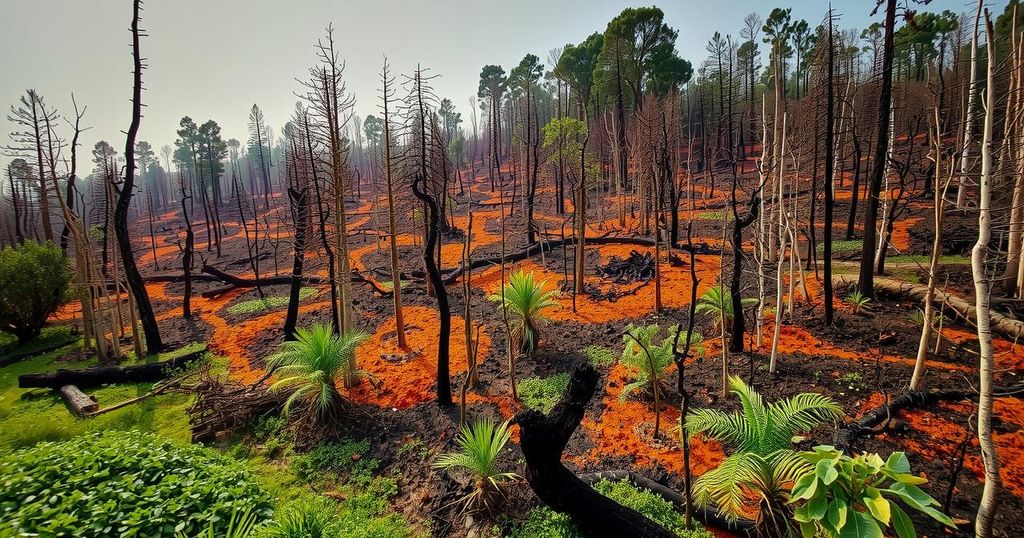Fires Devastate Brasilia National Forest, Impacting Wildlife and Communities

The Brasilia National Forest region in Brazil is experiencing severe fire damage, threatening wildlife and affecting air quality for local residents. Firefighting efforts are challenged by dry conditions and terrain. The situation prompts calls for improved preventive measures to mitigate future risks.
The Brasilia National Forest region in Brazil has recently suffered extensive fire damage, raising significant concerns regarding the environment and local wildlife. Reports indicate that massive sections of the forest have been engulfed, jeopardizing numerous species and ecosystems. Authorities are working diligently to assess the full extent of the destruction, but the situation remains delicate, and conditions are still evolving.
Firefighting efforts are currently underway, yet the dry climate coupled with strong winds has complicated containment operations. Crews are doing all they can, but challenges such as rough terrain are making their work exceedingly difficult. Ensuring the safety of firefighters and protecting as much of the forest as possible are priorities in this ongoing battle against the flames.
In addition to the ecological impacts, local communities are feeling the repercussions. The smoke and ash from the fires are affecting air quality, prompting health warnings in surrounding areas. Residents have reported increased respiratory issues, underscoring the broader implications of these fires not just on nature, but also on human health.
While officials continue to monitor the fires, there is a strong push towards preventive measures for the future. Many experts stress the importance of strategies to manage and mitigate fire risks, particularly in regions prone to such disasters. The hope is that with better planning and community involvement, future incidents can be less devastating, safeguarding both the environment and public health.
The fires in the Brasilia National Forest region are a pressing issue with substantial environmental and public health implications. While containment efforts are ongoing, the challenges remain formidable. Going forward, lessons must be learned to prevent similar incidents in the future. The wellbeing of both the forest and local communities relies on effective strategies and community support to mitigate these risks effectively.
Original Source: www.islandernews.com






